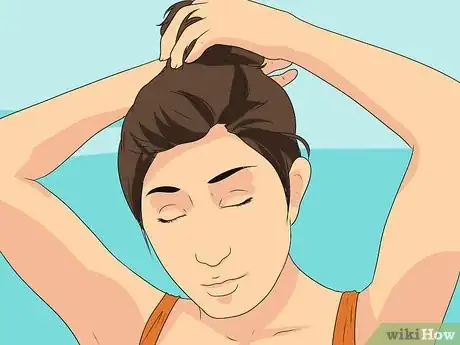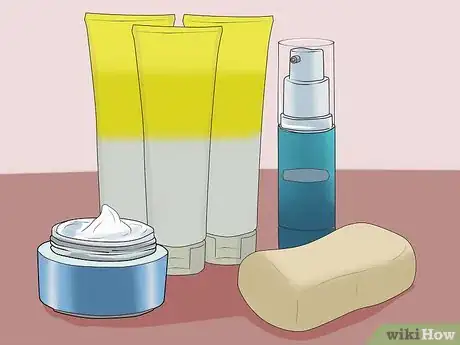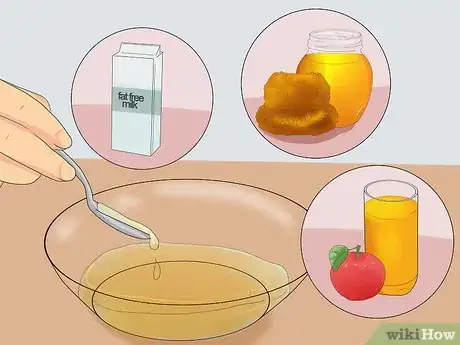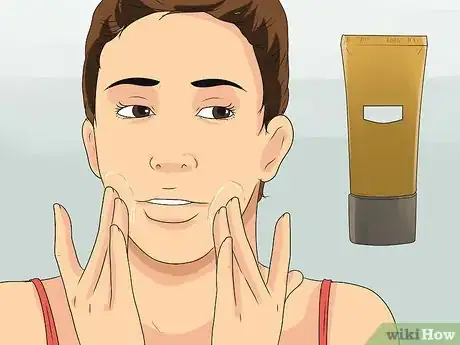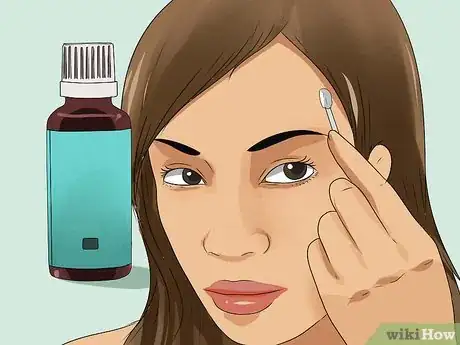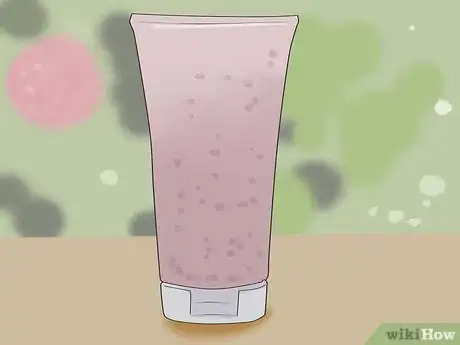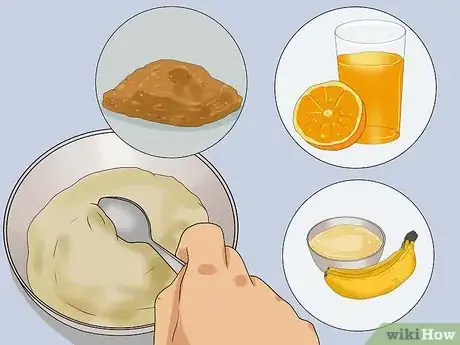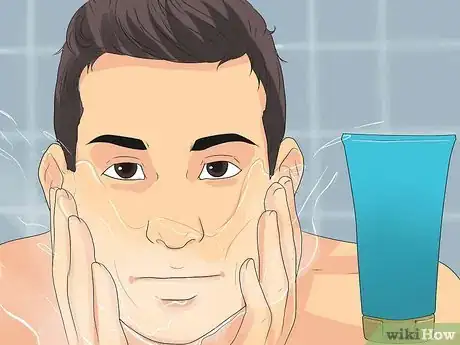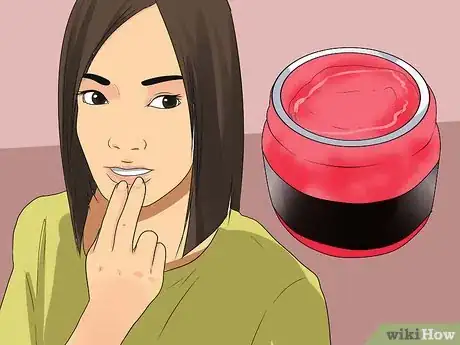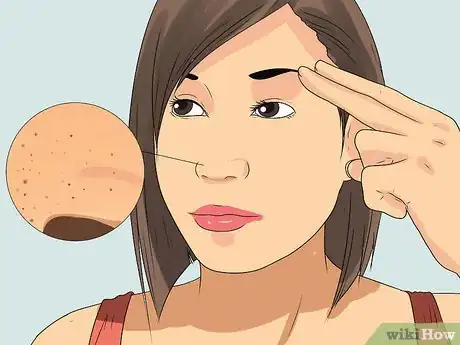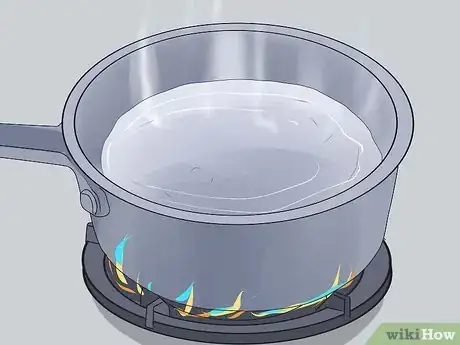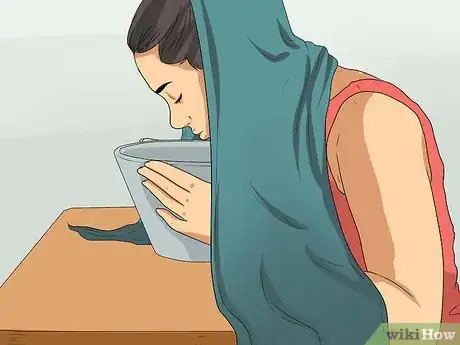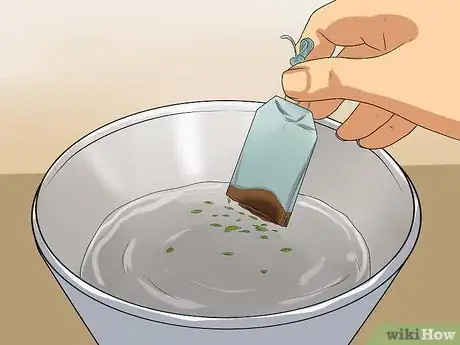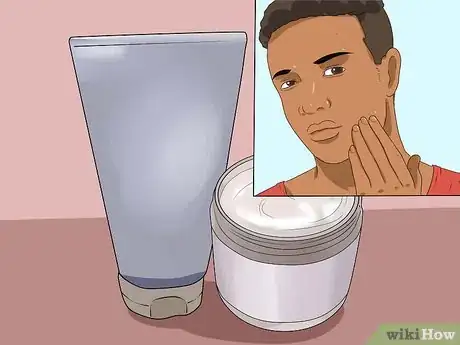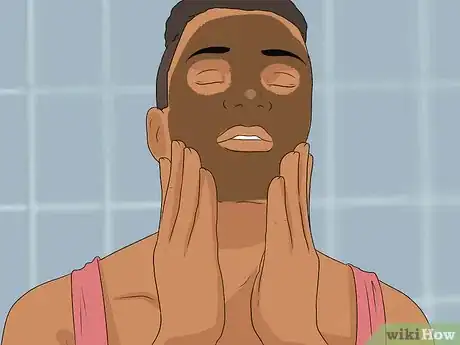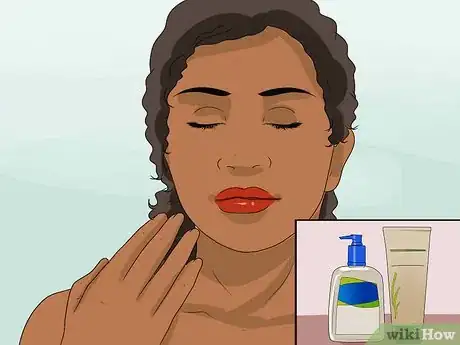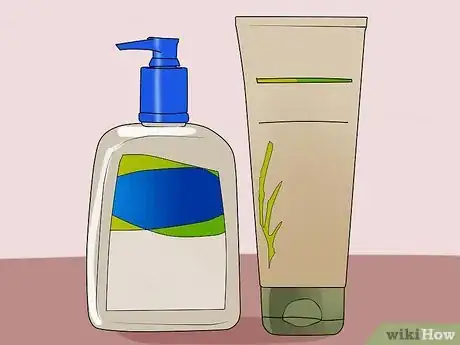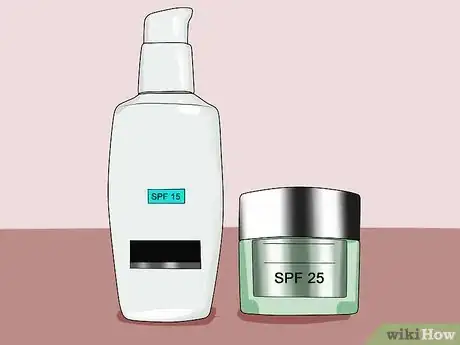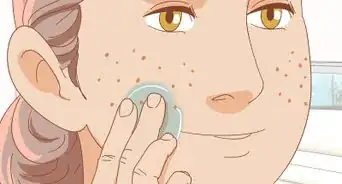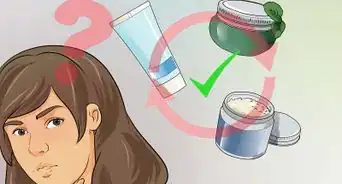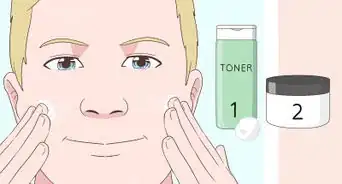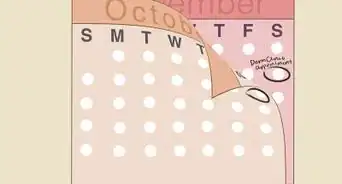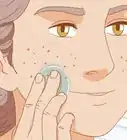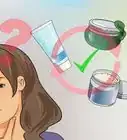This article was co-authored by Zora Degrandpre, ND. Dr. Zora Degrandpre is a Natural Health Doctor and Licensed Naturopathic Physician in Vancouver, Washington. She is a grant reviewer for the National Institutes of Health and the National Center for Complementary and Alternative Medicine. She received her ND from the National College of Natural Medicine in 2007.
There are 9 references cited in this article, which can be found at the bottom of the page.
wikiHow marks an article as reader-approved once it receives enough positive feedback. In this case, 97% of readers who voted found the article helpful, earning it our reader-approved status.
This article has been viewed 331,254 times.
Getting a facial is a relaxing but pricey endeavor. Fortunately, you can make your skin smoother, softer, and less irritable by giving yourself a facial and re-creating the professional experience right at home. You can use commercial products, homemade mixtures or a mix of both to create the perfect DIY facial in the comfort of your own home.
Things You Should Know
- Drape a towel over your head and lean over a bowl of steaming water for an at-home steam treatment that will deep clean your pores.
- For an easy DIY exfoliator, combine 1 mashed banana, 1/2 cup of sugar, 1 tablespoon of lemon juice, and 1/4 teaspoon of vitamin E oil.
- Combine 1/2 cup of pureed raspberries, 1/2 cup of oats, and 1/4 cup of honey to make your own face mask.
Steps
Cleansing Your Face
-
1Understand the importance of washing your face. Washing your face removes all of the oil, sunscreen and everyday pollutants from the environment that rest on the facial skin. It also helps prevent clogged pores, which in turn reduces the likelihood of developing breakouts. Finally, cleansing your face helps prepare the skin to absorb the products that you plan to apply to it.
- Washing your face is something that you should do at least twice a day, even if you don't plan on giving yourself a full facial.
-
2Pull back your hair from your face using a hairband. Wash your hands thoroughly and remove all of the makeup from your face.
- Use your regular makeup remover to clear your face of any products.
Advertisement -
3Use a commercial facial cleanser or wash. There are plenty of options out there, from $1 beauty bars to $40 cleansing lotions. Many estheticians, however, note that you don't have to spend a ton of money on a cleanser and that it is more important that you get something that is specific to your skin type.[1]
- As a general rule, gel and foam cleansers are more suited for combination/oily skin, while cream cleansers are more suited for normal/dry skin types because they add a little extra hydration to the face.
- If you have mild acne, you might want to try a cleanser with salicylic acid in it. Salicylic acid helps unclog pores to resolve and prevent lesions on the skin. One good option are Neutrogena's Oil-Free Acne Stress Control Power-Cream or Power-Foam washes.[2]
-
4Make your own homemade cleanser. You can also make your own cleanser using a few ingredients you probably already have on hand. Here are a couple of options:
- Mix together 3 tbsp fresh apple juice, 6 tbsp whole milk and 2 tbsp honey. If you want the cleanser to be more of a warming cleanser, then pop the honey in the microwave for 10 seconds before you add it to the other ingredients.
- Place 1/2 tablespoon of oats in a food processor and pulse until powdered. Then add 1 tablespoon almonds and pulse until powdered. Mix in 1/4 teaspoon of honey and 1/4 spoon of soy milk.[3]
-
5Wash your face with the cleanser you have selected or made. Wet the skin using warm water. Then, apply a quarter-sized amount of cleanser to your face with an outward circular motion.
- Once washed, rinse your face clean with warm water and pat it dry. Rubbing the skin vigorously on a towel will only redden and irritate your facial skin.
-
6Use a spot treatment. Apply a spot treatment that you can purchase or make at home. Salicylic acid is one of the most commonly used acne spot treatments because it works to clear out the clogged poor and get rid of dead skin cells that help facilitate break outs. Benzoyl peroxide is another commonly used acne spot treatment, which works by killing the bacteria that causes acne, which in turn alleviates the inflammation caused by said bacteria.[4]
- Some recommended spot treatments include Malin+Goetz Acne Treatment with active sulfur and salicylic acid and Clean and Clear Persa-Gel 10, which is a 10% benzoyl peroxide solution.[5]
- For a DIY spot treatment, apply either tea tree oil or toothpaste to the affected area. Tea tree oil, which is an antibacterial and anti-inflammatory oil, is a great home remedy for people with sensitive skin, because it doesn't typically dry out or redden the skin like benzoyl peroxide and salicylic acid do.[6]
- Dermatologists, however, recommend applying spot treatments conservatively to avoid overusing these products which can result in redness, dryness and flaking of the skin. Make sure that you're only using a pea-sized amount of any spot treatment.[7]
Exfoliating Your Face
-
1Understand exfoliation. Exfoliation helps get rid of dead skin cells, which can clog up your pores and contribute to breakouts. In addition, exfoliation brightens your skin and gives it a nice glow, whereas skin that isn't exfoliated can have a "dull" appearance.[8]
- Proper and regular exfoliation can also make you look younger because it exposes the new, fresh layers of skin beneath the old ones.[9]
-
2Select an exfoliator. There are plenty of skincare products that can you purchase from any drugstore to exfoliate your skin. Look for something that mentions exfoliation on the bottle, or defines itself as a "scrub" (intended to "scrub" away all the dead skin cells). If you have oily or acne-prone skin, you might consider a scrub with salicylic acid.
- You can also buy products with gentle abrasive ingredients, such as jojoba beans, rice grains or corneal. These help with the "scrubbing action". Some products can have sharper particles, such as apricot pits and shells. If you have sensitive skin that is easily irritated, it's best to avoid these type of exfoliators.[10]
-
3Make your own exfoliator. There are a number of DIY exfoliating scrubs that you can make right into your own home. Here are some options:
- Mix together 1 mashed banana, 1/4 cup granulated sugar, 1/4 cup soft brown sugar, 1 tbsp lemon juice and 1/4 tsp vitamin E. The sugar is the exfoliating agent, as it acts like little microbeads that clear off dead skin cells.
- Blend a half dozen fresh strawberries with 1/4 cup of milk. The enzymes in the strawberries dissolve dead skin cells and the milk helps to soothe the area afterward.[11]
- Combine 1 teaspoon of honey and 1 teaspoon olive oil. Separately, prepare a package of plain oatmeal. Use less water than the instructions call for so the oatmeal turns into a thick paste. Then add the honey-olive oil mixture to the oatmeal. The oatmeal exfoliates, while the honey-olive oil mix hydrates.[12]
-
4Apply the exfoliator. Be gentle. A light, circular motion is all that is needed to slough off dead skin cells. If you scrub vigorously, you'll just end up with red and irritated skin. Rinse off with warm water and pat dry.
-
5Exfoliate your lips. Use a lip scrub to buff away any dead skin on your lips. For a DIY lip scrub, you can either use a damp toothbrush in gentle circular motions or mix together caster sugar and any oil of your choice, until you reach your desired consistency.
- Once you've scrubbed the lips apply a lip balm to seal in the moisture. You can even make your own lip balm right at home.
Using a Steam Treatment
-
1Understand the benefits of a facial steam. Steaming cleanses and deep cleans your pores because you sweat out a lot of impurities in the process, including pimples, blackheads, etc. In addition, the steam also hydrates both the deeper and outer layers of the facial skin and helps to reduce the size of your pores.
-
2Boil some water. You'll want the water very hot so it can effectively steam your face, so boil some water in your tea kettle or on the stove. You can then put the water in a large bowl or in your bathroom sink. Wait a few minutes to let the water cool just slightly so you do not burn your face.[13]
- If you use a bowl, make sure it can handle boiling hot liquids.
-
3Steam your face. Place your face over the bowl for 2-5 minutes. To trap the steam so it goes directly to your pores to open them up, place a towel over your head to create a tent.[14]
-
4Make any additions. To boost up the steam, snip open a bag of green tea, and add the contents to the water. You could also a few drops of essential oils, like lavender.
Applying a Mask
-
1Understand the importance of using a mask. A mask further cleanses the pores and removes impurities from the skin. You can also use hydrating masks that add moisturizing properties to your skin.
-
2Get the right mask. If you have oily or acne-prone skin, you should get a mask with clay or sulfur to draw out impurities, such as Kiehl's Rare Earth Deep Pore Cleansing Mask. If you have dry skin, use a hydrating mask, such as Nügg Hydrating Face Mask.[15]
-
3Make your own mask. If you don't want to purchase a mask, you can also make your own. Combine 1/2 teaspoon avocado, 1/2 teaspoon honey, 1/2 teaspoon yogurt, 1/8 teaspoon Brewer's Yeast, and 1/2 teaspoon cranberry, apple juice or kombucha in a food processor. Pulse until creamy and mixed together.[16] Here are also some options for different skin types:
- For normal or dry skin: Mix together 1/3 cup cocoa powder, 1/2 cup honey, 3 tbsp cream, and 3 tbsp oats.
- For normal to oily skin: Mix together 1/2 cup pureed raspberries, 1/2 oats, and 1/4 cup honey.
-
4Apply the mask. Rub the mask into your skin, avoiding the eyes and mouth area. Let the mask sit for 10-15 minutes to let it set. Don't, however, let it get to the crumbly, mummified stage. Remove the mask with warm water and a soft washcloth.[17]
- If you feel any burning or warming sensations while the mask is setting, remove it. Your skin may be getting irritated.
- When removing the mask, don't abrasively scrub it off, but instead let the warm water do its work to flush the mask out and off of your skin.
Moisturizing Your Face
-
1Understand the importance of moisturizing. Moisturizing is a key part of any skin care routine. Because moisturizers hydrate the skin, they help the face look healthy, smooth, and fresh.
- Moisturizing also has long-term benefits. Hydration is what enables skin to function at peak performance, meaning that skin cells can repair themselves quickly and turn-over fresh cells. This has huge anti-aging advantages in the long term. Studies have shown that people who use moisturizer develop wrinkles at a fraction of the rate of those with dry skin.
-
2Select a moisturizer. You'll want to choose a moisturizer based on your skin type. If you have oily skin, look for lotions or gels instead of creams. If you have dry skin, look for a cream, which has more oil in it. The greater the oil content, the better absorption of the moisturizer into the skin to hydrate the tissue. If you have combination skin, try a lotion with no acids, such as Cetaphil, Aveeno, Neutrogena or Lubriderm.[18]
- Avoid choosing a very light moisturizer for after a facial. Your skin has just been deep cleaned and will need to be replenished with moisture. Otherwise, the lack of moisture in the skin will cause it to begin to overproduce oil and clog your pores, which in turn will lead to break-outs.
-
3Consider getting a moisturizer with an SPF.[19] The sun effectively destroys our skin cells and one of the secrets to keeping skin fresh and young-looking is to incorporate a moisturizer with sun protection into our daily skin care regimens.[20]
- Try getting a moisturizer with a 15-30 SPF (sun protection factor). Recent studies have shown that higher SPF products are not any more effective and, moreover, that they may not be as high an SPF as advertised.[21]
- One option is Neutrogena's Oil Free Facial Moisturizer with a 15 sunblock or Clinique's Superdefense Daily Dense Moisturizer SPF 25.
-
4Apply the moisturizer. Gently use your finger tips to massage the moisturizer into your skin, making sure to get into all the nooks and crannies of your face.
- Be sure as well to moisturize your neck - the skin there also deserves attention!
References
- ↑ http://www.therheeldaze.com/listen-to-an-esthetician-how-to-give-yourself-a-facial/
- ↑ http://www.therheeldaze.com/listen-to-an-esthetician-how-to-give-yourself-a-facial/
- ↑ http://www.huffingtonpost.com/deborah-burnes/home-facial_b_1778710.html
- ↑ http://www.refinery29.com/acne-treament#slide
- ↑ http://www.refinery29.com/acne-treament#slide
- ↑ http://www.refinery29.com/acne-treament#slide
- ↑ http://www.refinery29.com/acne-treament#slide
- ↑ https://www.birchbox.com/guide/article/how-to-choose-the-right-scrub-for-your-skin
- ↑ http://www.therheeldaze.com/listen-to-an-esthetician-how-to-give-yourself-a-facial/
- ↑ http://www.askwomennet.com/exfoliating-products.html
- ↑ http://www.therheeldaze.com/listen-to-an-esthetician-how-to-give-yourself-a-facial/
- ↑ http://www.womansday.com/style/beauty/advice/a5005/8-do-it-yourself-home-facials-106030/
- ↑ http://www.therheeldaze.com/listen-to-an-esthetician-how-to-give-yourself-a-facial/
- ↑ http://www.therheeldaze.com/listen-to-an-esthetician-how-to-give-yourself-a-facial/
- ↑ http://www.allure.com/beauty-trends/blogs/daily-beauty-reporter/2014/10/how-to-give-yourself-facial.html
- ↑ http://www.huffingtonpost.com/deborah-burnes/home-facial_b_1778710.html
- ↑ http://www.allure.com/beauty-trends/blogs/daily-beauty-reporter/2014/10/how-to-give-yourself-facial.html
- ↑ http://www.huffingtonpost.com/2014/02/04/how-to-moisturize-your-face_n_4704301.html
- ↑ http://www.huffingtonpost.com/2014/02/04/how-to-moisturize-your-face_n_4704301.html
- ↑ http://www.therheeldaze.com/listen-to-an-esthetician-how-to-give-yourself-a-facial/
- ↑ http://www.ewg.org/2015sunscreen/report/whats-wrong-with-high-spf/
About This Article
You can give yourself a deep cleansing facial at home by using some homemade mixtures. Before starting your facial, clean your face with a mixture made from fresh apple juice, whole milk, and honey. Once your face is clean, spot treat any acne by applying tea tree oil or toothpaste to the affected area. To get rid of dead skin, your next step is to exfoliate your face. There are several homemade exfoliating scrubs that are easy to make. For instance, mix together banana, sugar, brown sugar, lemon juice, and vitamin E, then gently apply it to your skin in a circular motion. In order to deep clean your pores, you’ll also want to use a steam treatment, which you can easily do by boiling a pot of water, putting a towel over your head, and placing your face over the steam for 2 to 5 minutes. For an even deeper cleanse of your pores, make a mask out of cocoa powder, honey, cream, and oats. After 10 to 15 minutes, rinse your face with warm water. For more tips from our Medical co-author, including how to moisturize your face, keep reading!

